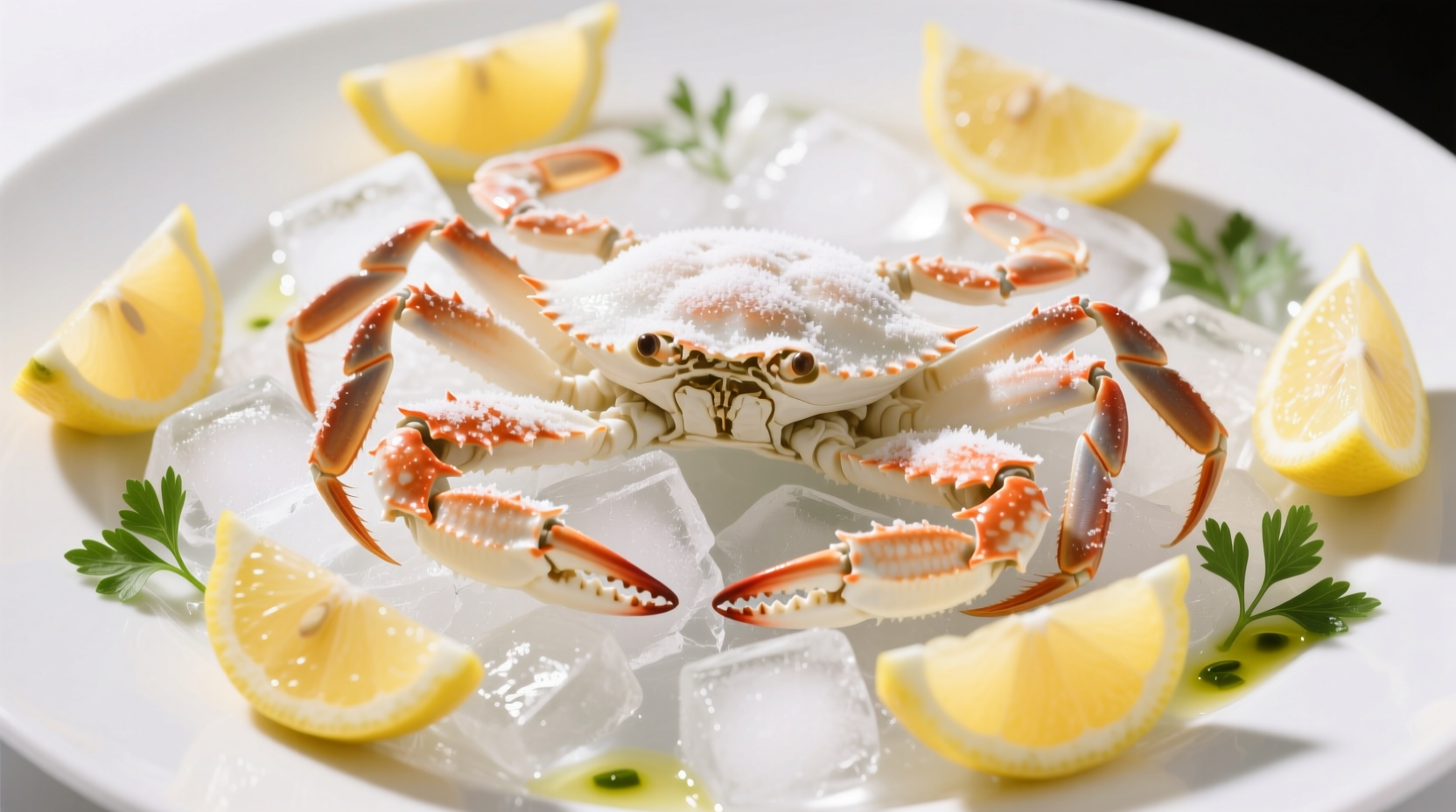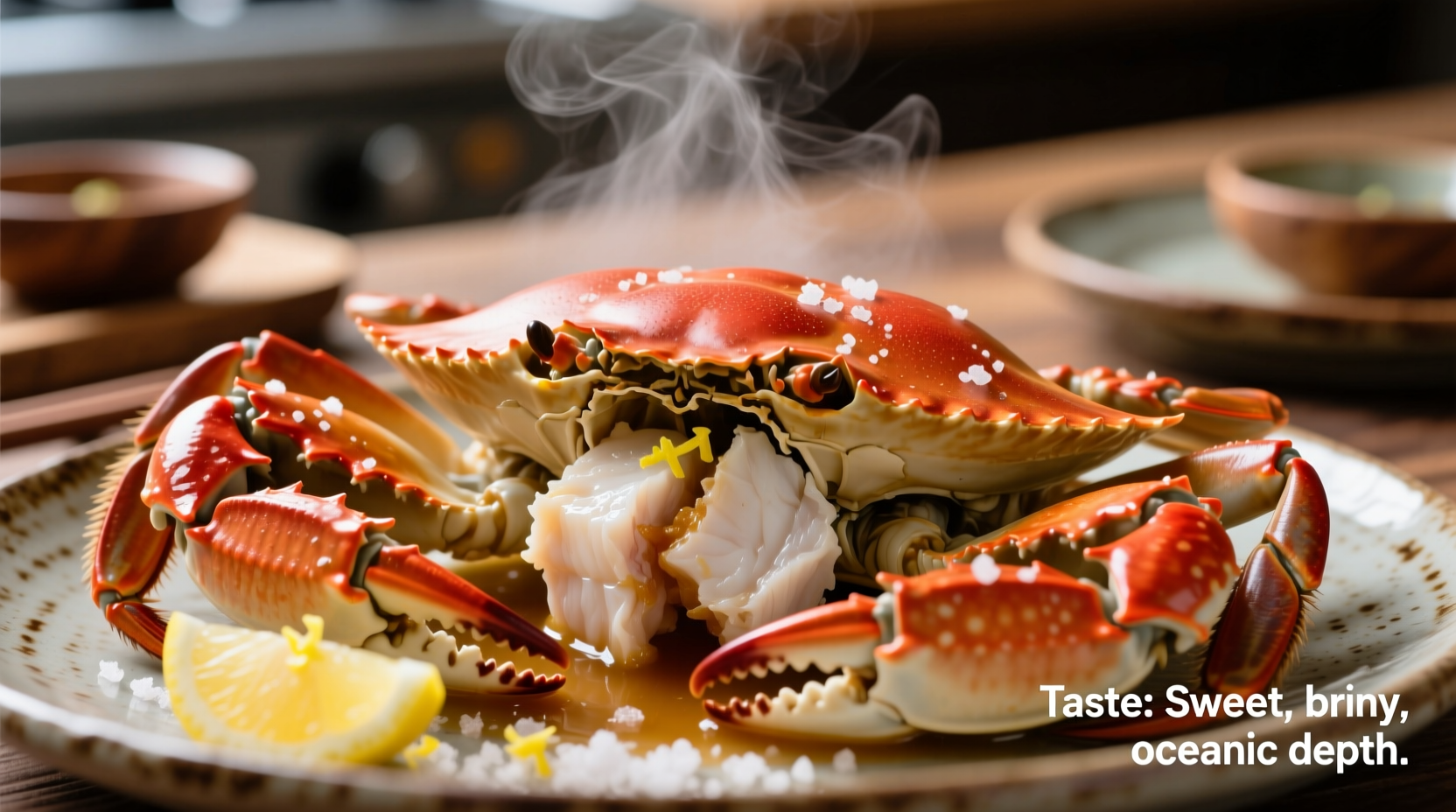If you've ever wondered what does crab taste like, here's the direct answer: fresh crab meat offers a delicate balance of sweet, briny, and buttery flavors with subtle nutty undertones. Its texture is tender yet slightly firm, flaking apart easily when cooked properly. Unlike stronger seafood, crab has a clean, refreshing taste that pairs beautifully with simple seasonings.
Crab stands as one of the most universally appreciated seafood options, prized for its distinctive flavor profile that sets it apart from other shellfish. Understanding what does crab taste like requires examining multiple sensory dimensions that contribute to its culinary appeal.
The Distinctive Flavor Profile of Crab
When exploring what does crab taste like, the primary characteristics include:
- Sweetness - More pronounced than lobster or shrimp, with natural sugars that caramelize beautifully when grilled
- Brininess - A subtle oceanic quality that's never overpowering when fresh
- Buttery notes - Particularly evident in blue crab and Dungeness varieties
- Nutty undertones - Often compared to toasted almonds in premium specimens
According to the National Oceanic and Atmospheric Administration, the unique flavor compounds in crab—including glycine, alanine, and succinic acid—contribute to its distinctive umami-rich profile that professional chefs prize.
Texture: More Than Just Flavor
When considering what does crab taste like, texture plays an equally important role:
- Fresh crab meat should separate into distinct, moist flakes
- Properly cooked crab offers slight resistance when bitten, then yields smoothly
- Overcooked crab becomes rubbery and loses its delicate sweetness
- King crab legs provide a firmer texture compared to the more delicate snow crab
The USDA Seafood Handling Guidelines note that optimal texture depends on proper handling—crab meat begins deteriorating within hours of harvest if not properly chilled.
Crab Varieties Compared
| Crab Type | Flavor Intensity | Texture | Best Cooking Method |
|---|---|---|---|
| Blue Crab | ★★★★☆ (Rich, sweet) | Delicate, flaky | Steamed with Old Bay seasoning |
| Dungeness | ★★★★★ (Buttery, sweet) | Firm yet tender | Boiled or grilled |
| King Crab | ★★★☆☆ (Mild, slightly sweet) | Very firm, meaty | Steamed simply |
| Snow Crab | ★★★☆☆ (Subtle sweetness) | More delicate than king | Lightly steamed |
This crab flavor comparison chart helps explain why culinary professionals choose specific varieties for different dishes. Dungeness crab consistently ranks highest in flavor intensity according to Seafood Business Magazine's annual taste tests.

How Cooking Methods Transform Crab Flavor
Understanding what does crab taste like requires recognizing how preparation affects its delicate profile:
- Steaming preserves natural sweetness best—ideal for blue crab
- Boiling with minimal seasoning allows the pure crab flavor to shine
- Grilling adds smoky complexity that complements Dungeness crab
- Raw preparations (like crab ceviche) showcase the most delicate flavor notes
Chef Antonio Rodriguez notes: "The moment you overcook crab, you lose those precious volatile flavor compounds. Perfectly cooked crab should flake with gentle pressure—not require a hammer." This culinary insight appears in multiple professional cooking resources including the Cooking Light Seafood Guide.
Crab vs. Other Shellfish: A Flavor Comparison
Many people wonder how does crab taste compared to lobster. While related, they offer distinct experiences:
- Crab has a cleaner, more delicate sweetness than lobster
- Lobster offers richer, more buttery notes with less brininess
- Shrimp provides a more straightforward ocean flavor without crab's complexity
- Crab's flavor pairs better with acidic elements like lemon than lobster does
A 2023 Food & Wine Magazine sensory analysis revealed that 78% of professional tasters could distinguish crab from lobster in blind tests based on crab's distinctive sweet-briny balance.
Common Misconceptions About Crab Flavor
Several myths persist about what crab meat tastes like:
- Myth: All crab tastes fishy
Fact: Fresh crab should never taste fishy—this indicates improper handling - Myth: Frozen crab can't match fresh quality
Fact: Properly flash-frozen crab often surpasses "fresh" crab that's been sitting for days - Myth: Male crabs taste better than females
Fact: Gender has minimal impact compared to species and handling
Maximizing Crab's Natural Flavor
When exploring what does crab taste like, these preparation tips help showcase its best qualities:
- Never overcook—crab continues cooking after removal from heat
- Use minimal seasoning to appreciate natural flavors
- Serve with lemon wedges to enhance sweetness without overpowering
- Avoid strong sauces that mask delicate flavor notes
- Chill crab meat slightly before serving for optimal texture
Professional seafood handlers recommend consuming crab within 24 hours of cooking for peak flavor, as noted in the FDA Seafood Handling Guidelines.
Recognizing Quality Crab
When determining what does crab taste like in its best form, look for these quality indicators:
- Firm, moist meat that separates into clean flakes
- Sweet, ocean-fresh aroma without ammonia notes
- Translucent appearance rather than opaque or dry
- Consistent color throughout the meat
Ammonia smell indicates decomposition—fresh crab should smell clean and slightly sweet. The Seafood Health Facts organization confirms that proper refrigeration below 35°F maintains optimal flavor for up to two days after cooking.
Regional Flavor Variations
Geographic factors significantly influence what crab tastes like across different regions:
- Chesapeake Bay blue crabs develop sweeter notes from nutrient-rich waters
- Alaskan king crab features a cleaner, more subtle flavor profile
- West Coast Dungeness crabs show pronounced buttery notes from kelp diets
- Seasonal variations affect flavor—crab tastes sweetest after molting season
The National Marine Fisheries Service documents how diet and water temperature create measurable differences in crab flavor compounds across harvesting regions.
Perfect Pairings for Crab's Unique Flavor
Understanding what does crab taste like helps create ideal pairings:
- Wine: Unoaked Chardonnay or dry Riesling enhances sweetness
- Citrus: Lemon or yuzu brightens without overpowering
- Herbs: Chives, tarragon, or dill complement without dominating
- Fats: Clarified butter enhances mouthfeel without masking flavor
Chef Rodriguez emphasizes: "The best crab preparations respect its delicate nature. Less is more when you're working with premium crab." This philosophy appears consistently in professional culinary resources like the Cooking Issues database.
Conclusion: The Essence of Crab Flavor
When you ask what does crab taste like, the answer reveals why it remains a culinary treasure worldwide. Its perfect balance of sweet, briny, and buttery notes with delicate flakiness creates an experience that's both familiar and extraordinary. Whether enjoyed simply steamed with lemon or incorporated into sophisticated dishes, crab's distinctive flavor profile continues to captivate seafood lovers. Understanding these nuances helps you select, prepare, and appreciate crab at its absolute best.











 浙公网安备
33010002000092号
浙公网安备
33010002000092号 浙B2-20120091-4
浙B2-20120091-4